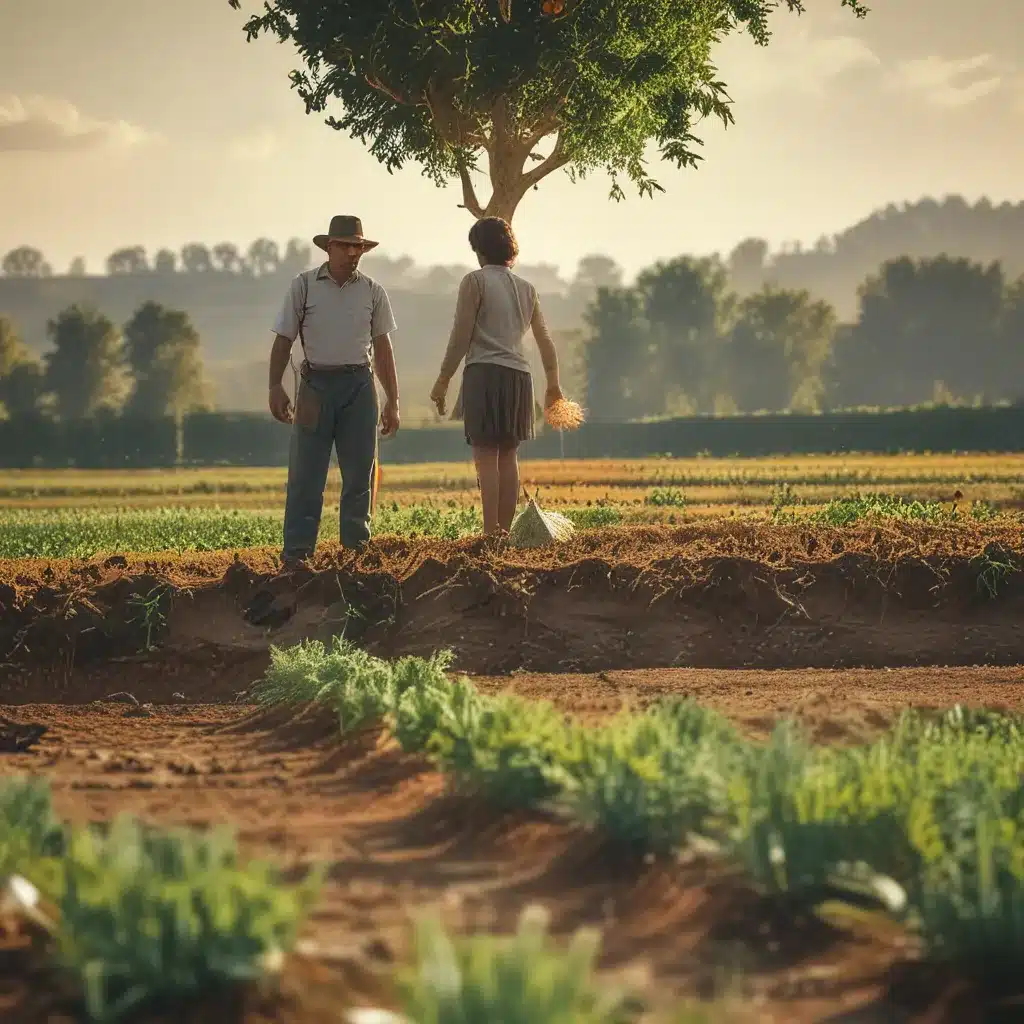
Cultivating a Greener Future: The CSA Way
As I stroll through the lush fields of Thornleaf Community Supported Agriculture (CSA), the air is thick with the scent of freshly turned soil and the hum of busy pollinators. It’s a far cry from the sterile, industrial farms that have come to dominate our modern food landscape. But here, in this vibrant oasis, I’m reminded that a more sustainable, community-driven future is not only possible, but already taking root.
You see, I didn’t always have a green thumb. In fact, my first attempts at gardening were, well, let’s just say they didn’t exactly bear fruitful results. But then I discovered the magic of CSAs, and my entire perspective on food and farming changed.
Embracing the CSA Ethos: From Seed to Plate
The beauty of a CSA lies in its emphasis on sustainability, community, and a deep connection to the land. Instead of relying on long-distance supply chains and monoculture crops, CSAs like Thornleaf prioritize crop diversification, regenerative farming practices, and a keen understanding of local ecosystems.
As I’ve delved into the world of CSAs, I’ve learned that this approach isn’t just about growing delicious, nutrient-dense produce. It’s about sowing the seeds of a more resilient, equitable, and environmentally conscious food system. And the evidence is clear – CSAs are leading the charge when it comes to sustainable farming techniques that can truly transform our global food landscape.
Cultivating Crop Diversity: The Key to Resilience
One of the hallmarks of a thriving CSA is its commitment to crop diversity. Rather than focusing on a single cash crop, CSA farmers like those at Thornleaf cultivate a rich tapestry of fruits, vegetables, and grains, each one playing a vital role in the overall health of the ecosystem.
As CIMMYT’s research has shown, this approach not only boosts agricultural productivity and reduces environmental risks, but it also enhances nutritional outcomes and promotes sustainable agriculture. By diversifying their crops, CSA farmers are quite literally sowing the seeds of change, building a food system that is more resilient in the face of climate change, market volatility, and other challenges.
But crop diversity is just the beginning. CSAs like Thornleaf are also leading the charge when it comes to regenerative farming practices, which aim to restore and enhance the health of the soil, water, and overall ecosystem. From implementing no-till cultivation to incorporating cover crops and creating on-site composting systems, these farmers are proving that it’s possible to produce abundant, nourishing food while also healing the land.
Cultivating Community: The Heart of the CSA Movement
As I continue my exploration of Thornleaf CSA, I’m struck by the sense of community that permeates every aspect of the operation. This isn’t just a place to buy produce – it’s a hub of shared knowledge, mutual support, and collective action.
At the heart of this community-driven approach are the CSA members themselves. Rather than being passive consumers, they’re active participants in the farming process, from volunteering in the fields to helping with harvests and distribution. This level of engagement not only fosters a deeper appreciation for the work that goes into food production, but it also strengthens the bonds between farmers and their community.
In fact, initiatives like those in the Horn of Africa have shown that this model of community-supported agriculture can be a powerful tool for building food and seed system resilience, particularly in regions facing protracted crises. By empowering smallholder farmers and fostering collaborative networks, CSAs are helping to create a more equitable, sustainable, and food-secure future.
Sowing the Seeds of Transformation
As I reflect on my time at Thornleaf CSA, I’m struck by the sense of hope and possibility that permeates this place. These aren’t just farmers – they’re visionaries, pioneers, and agents of change, determined to transform our broken food system one seed, one harvest, and one community at a time.
And the best part? You don’t have to be an expert gardener or a seasoned farmer to get in on the action. Anyone can get involved, whether it’s by joining a CSA, starting a backyard garden, or supporting local food initiatives in your community.
So why not take the first step and join the CSA movement? It may just be the most important thing you do for your health, your community, and the planet. After all, as the old saying goes, “From little seeds, mighty trees grow.” And in the case of CSAs, those trees are bearing the fruit of a truly sustainable, equitable, and nourishing food system.



